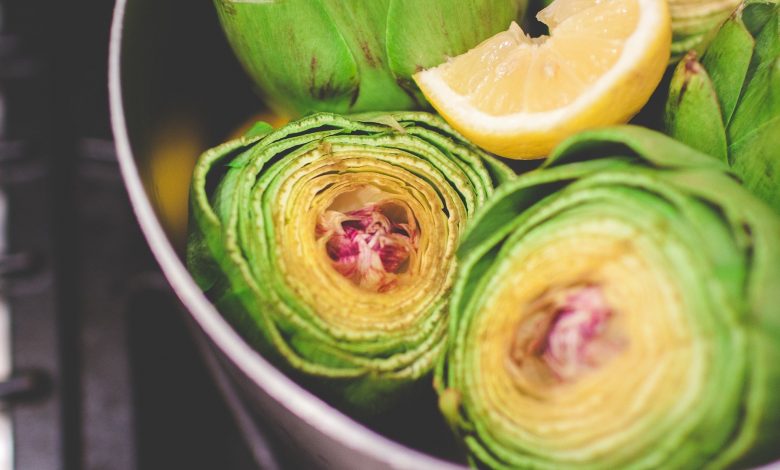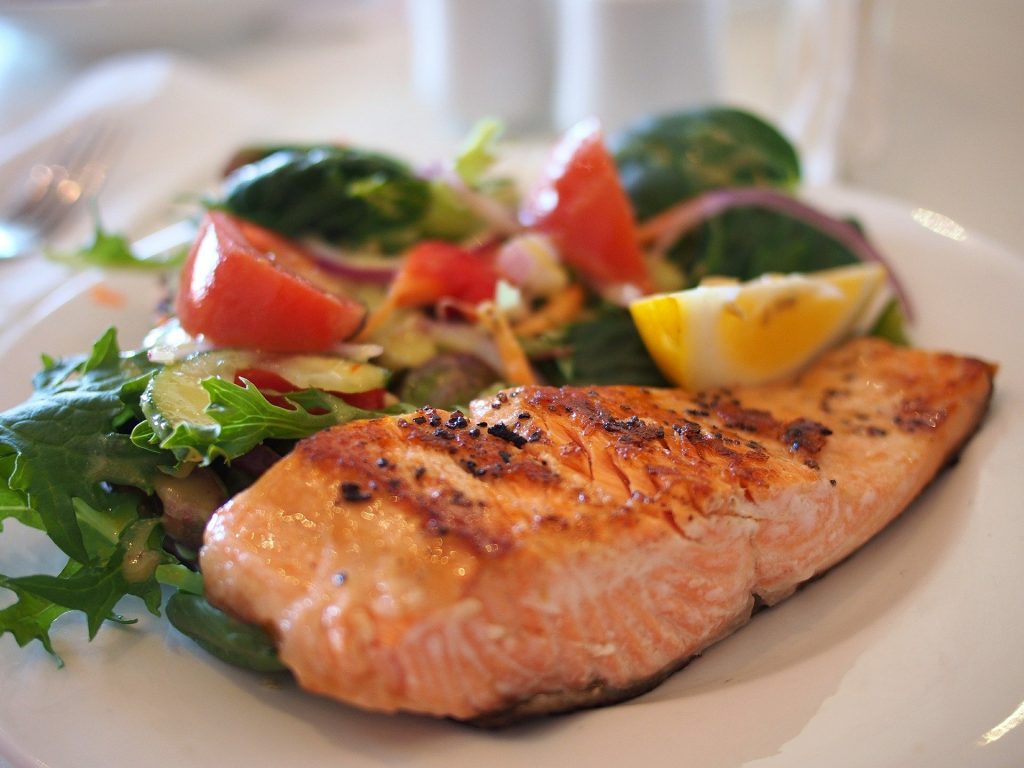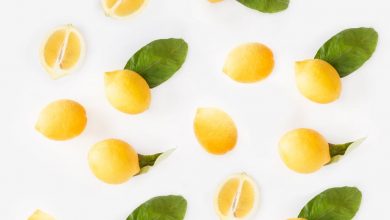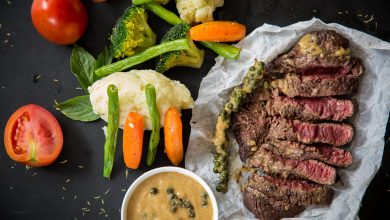
The Healthiest Protein-Rich Foods That Will Help You Lose Weight
Losing weight is hard work; there’s no way around that. However, there are always things you can do to make it easier on yourself – simple ways to get your body to do some of the heavy lifting for you. There are a lot of these, like getting a consistent good night’s sleep and making sure to stay hydrated. Another great way to get your body in weight loss mode is to make sure you’re getting a healthy helping of protein in your diet.
Beef, pork, chicken, and meat in general have always been marketed to us as the best (if not only) way to get your daily intake of protein. However, as a society, we have evolved to a place where we are now embracing instead of tolerating protein alternatives.
Beef and pork are on the bottom of the totem pole in terms of healthiness, followed closely by chicken. But leaner meats such as turkey and fish are a great way to ease your way towards the healthiest protein delivery systems out there. Before we start hitting you with some of the leanest, meanest, and tastiest protein alternatives out there, let’s first discuss why protein is such an important factor when trying to lose weight.
How Does Protein Help With Weight Loss?
If you want to lose weight and get a better-looking body, there’s nothing more crucial than protein, which should account for about 25-35 percent of your caloric intake. You can calculate your daily recommended protein intake by multiplying how many calories you consume by 0.075. For example, if you’re taking in 2,500 calories, you would want to take in (2,500 x 00.075) 187.5 grams of protein.
This wonder nutrient can boost your metabolism, reduce cravings, and change weight-regulating hormones, among other benefits. It’s like a lose-weight-nutrient. But what makes it so helpful?
Hormones
First, let’s talk about those weight-regulating hormones because they are the main reason protein is such a helpful tool for weight loss. Believe it or not, your weight is primarily regulated by your brain and hormones, which act as signals to your brain that influence your hunger.
More protein in your diet increases levels of satiety hormones (which satisfies your hunger), such as GLP-1, peptide YY, and cholecystokinin, but it also reduces levels of hormones that make you hungry, such as ghrelin. This is one of the most significant ways in which protein can help you drop pounds, but it’s also one of the easiest because your body’s chemistry is doing all the work for you.
Metabolic Advantage
After you’ve eaten a meal, some of the calories you’ve just taken are used right away to digest and metabolize the food, and this is called the thermic effect of food (TEF). There is no consensus on exact numbers, but there’s no question that protein (20-30 percent) has a much higher TEF than carbs (5-10 percent) and fat (0-3 percent).
Because of the high TEF, along with a few other factors, eating lots of protein boosts your metabolism. This means you’re burning calories all the time, even while you sleep. Studies have shown that high protein intake can boost metabolism and increase the number of calories you burn from 80 to 100 per day. Because it helps you burn extra calories, high protein diets have what some call a metabolic advantage over diets with lower protein composition.
Cut Those Cravings
Many people who are unable to meet their weight loss goals struggle with late-night cravings, and protein can help with that too. Studies have shown that protein at 25 percent of calories can cut cravings in general by 60 percent and late-night cravings in particular by 50 percent. If you’re guilty of constant late-snacking like many of us are, it might be time to look at a more protein-rich diet. And it might behoove you to get started early; a high-protein breakfast, in particular, has proven to have craving-reducing powers.
Now that we know why protein is so essential for losing weight, let’s dive into some of the tasty foods that can get you the protein you need.
Best Protein-Rich Foods for Your Diet

Guava
A little known fact about this tropical selection is that it’s the fruit with the highest protein density. One cup of guava brings a four-gram punch of protein with nine grams of fiber against just 112 calories. It’s also one of the best sources of vitamin C you can find, bringing a whopping 600 percent of your daily recommended vitamin C intake in just one cup. Whether it’s a juice, a cake, or a bread, it’s easy to get guava involved in your favorite dishes. It may be tougher to find than other sources of protein, but it’s well worth the effort for the best fruit in the protein game.
Artichoke
To quell the rumblings that hunger hormones like ghrelin give you, your best bet is to eat high-fiber and high-protein foods. The unassuming artichoke has got you covered there with 19.3 grams of fiber (twice as much as much-celebrated kale) and 5 grams of protein per medium artichoke, one of the highest among vegetables. It’s also packed with prebiotic fibers that assist in the reduction of inflammation, keep gut bacteria in check, and keep your hunger satisfied. And the fact that one of those tasty (and healthy) artichokes will cost you just 60 calories is the icing on the cake. You can eat an artichoke all by itself in a nice salad, mix the leaves up with your other favorite greens, or populate your homemade pizza or flatbread with the tasty hearts.
Peas
Peas don’t get a lot of mention as a heavyweight in the protein game, but they’re one of the best veggies out there. One cup of these little green guys can have up to ten grams of protein, eight times more than the much more popular spinach. The same cup only sets you back 0.5 grams of fat and 118 calories as well. Peas also have high levels of an amino acid compound called glutamine that helps rebuild your muscles post-workout, improve digestive health, and cut sugar and alcohol cravings down immensely. One cup also contains nearly 100 percent of your daily recommended intake of vitamin C.
Quinoa
If you’re living a vegan or vegetarian lifestyle, that doesn’t mean you can’t enjoy a high-protein diet as well. Quinoa is a great option to rely on if you’re in this situation. It boasts all 11 amino acids that make protein complete and six grams of protein per cup to go with just 169 calories. Its high fiber content also means it’s one of the most filling carbs on the market, more so than brown rice, barley, buckwheat pasta, and wheat. You can use quinoa for any number of things, from casseroles to stuffed bell peppers to spring rolls salads and stir-frys. The possibilities are endless.
Halibut
While it’s not as heavy in the protein department as some other fish, like yellowtail or tuna, halibut’s 16 grams of protein per three ounces is still a hefty intake when you consider you’re getting only 77 calories. It’s also great in terms of satiety, better even than oatmeal and veggies. In an Australian study published in the European Journal of Clinical Nutrition called “The Satiety Index of Common Foods,” halibut ranked as the number two most filling food out there, behind only boiled potatoes. That means when it comes to making you feel full, it doesn’t get much better than this sea-dweller.
Wild Salmon
Wild salmon is another lean, protein-rich fish, serving up 17 grams of protein per three-ounce fillet. Be sure to make the distinction between wild and farmed salmon though because the farmed fish are fattened with fish meal, which will cost you about 130 more calories per serving according to the USDA. The caloric intake (121 calories) is a lot higher than the halibut we just mentioned, but it’s still a far cry from what you get with chicken or red meats. In one study, participants were assigned diets containing no seafood, lean white fish, or salmon. They all successfully lost weight, but the salmon-eating group had the lowest fasting insulin levels and an impressive reduction in inflammation to boot.
Lean Turkey
If you’re someone that just needs to eat some meat that isn’t fish, this is the way to turn. Lean turkey meat is one of, if not the, healthiest meat out there. It’s got far less fat (eight grams) and calories (140) than chicken and red meat and yields just over 20 grams of protein for every four-ounce serving. This big bird is also rich in DHA omega-3 acids – 18 mg per serving, to be exact – which has been shown to have a litany of capabilities. Some of these attributes include boosting brain function, turning fat genes off, and preventing fat cells from growing. They can even have a positive effect on your mood. Make sure you’re eating your turkey at home though. Buying white turkey meat from the grocery store (dark meat is much fattier) is much smarter than eating out since restaurants usually tack on fat and calories to their turkey dishes with flavor boosters.
Lentil
Like quinoa, a regular and healthy serving of lentils can go a long way in replacing, and even boosting, your protein intake when you’re not eating much or any meat. It comes with about 20 grams of protein per cup, which is about the same as the protein you’d get from three eggs, with under one gram of fat. Needless to say, it’s no slouch on this list. Lentils are also stuffed with loads of other great minerals that assist with bone health, such as magnesium, potassium, iron, folate, copper, and manganese. They’re also high in fiber and are great in many dishes, whether it’s mixed in with a medley of other ingredients in a stir-fry or used as the focal point in a hot and tasty soup.
Beans
White and Lima beans are solid, packing 15 grams of protein power per half-cup, while their black counterparts boast 20 grams. Beans are also filled with other healthy antioxidants, vitamins, and minerals that can give your brain and muscles a boost. Be sure to read the package when buying your beans though, as a lot of manufacturers are putting harmful herbicides in their products these days. They also digest very slowly, which leaves you feeling fuller for longer, cutting down on those killer cravings. Beans are also a very flexible food; you can toss em in your baked dishes, your soups, your salads, and your stews, and no tasty chili or Mexican meal is complete without some beans.
Greek Yogurt
Apart from the healthy 20 grams of protein and measly 150 calories you get per seven-ounce serving, Greek yogurt is also overflowing with weight-loss assisting probiotics. The good bacteria in probiotics will boost your metabolism, as well as your immune system. It doesn’t get much better than Greek yogurt when it comes to morning proteins, but this is also another one where reading the labels is important. Many of these yogurt companies love to douse their product in sugar that makes the protein you gained a Pyrrhic victory. When browsing the different yogurts at your local grocer, be sure to go for the option with the highest protein content (20 or more grams) and lowest sugar content (6 grams or fewer).
Pumpkin Seeds
Pumpkin seeds are one of the most criminally underused foods out there, especially when you consider just one ounce contains nine grams of protein. You also get a good amount of healthy fats, fiber, manganese, magnesium, phosphorus, and zinc, all of which help keep you energized and satisfied in the food department. You’ll enjoy them whether you’re enjoying them roasted as a light snack during the day or incorporate them into your salads or rice-based meals. Just make sure not to go overboard, as the 60 calories per tablespoon can really add up.
Tempeh
Here, we bring you the less-famed soy-based protein. While you probably know about tofu, tempeh is just as good if not better. While tofu is made from soy milk the same way cheese is made from milk, tempeh is made directly from the soybeans, which gives it 32 grams of protein per cup compared with tofu’s 20 grams. It’s probably the item on our list you’ll have the toughest time finding when you’re out and about, but there’s no doubt at least one grocery store in your area has some stored in the refrigerated vegetarian section. Tempeh can be substituted into almost any of your favorite dishes; you can make sweet and sour or teriyaki tempeh, or you can stuff your tempeh into a taco or a toasted sandwich!
Cottage Cheese
All you cheese fans out there can take a breath now, we’ve got a cheese option on our list. Cottage cheese delivers on your cheese craving and your protein needs with 25 big grams of protein against just 200 calories in one cup. Compare that to something like cheddar cheese, which has over twice as many calories (530) in a cup, while providing a negligible advantage in protein (33 grams). Cottage cheese is also a great source of casein, a dairy protein that helps keep you feeling full so you can breeze right on through without your usual post-lunch, mid-day trip to the vending machine for junk food.
Chickpeas
Chickpeas give you a ridiculous 39 grams of protein per cup, which is actually slightly more than chicken and just a little less than pork and beef with none of the health-related red flags that red meats bring. Garbanzo beans are also supplying your body with 19 grams of fiber per cup to go with that protein punch. Chickpeas are great roasted and eaten by hand as a light snack, but the best way to enjoy them is in delicious hummus form with some fresh veggies to dip them in. Just make sure to remember to keep everything in moderation, as it’s way too easy to go through a whole tub of hummus without realizing it.

You are now prepared to confidently hit the grocery store and stock up on healthy, high-protein foods to make your weight-loss journey as easy on you as possible. This amazing little nutrient has the power to boost your metabolism, increase your satiety, reduce your hunger, and cut those annoying cravings for junk food!
To get you started on a high-protein diet, we’ve gone through over a dozen of the best healthy protein sources. We broke down everything from heavier meat options to green veggie options to popular so-called meat-alternatives that pack a big protein smack that would make a lot of those meats jealous. Protein helps you burn calories while you don’t have to do anything but digest. Your body literally does the work for you, so why not try a high-protein diet to lose that weight you’ve always been meaning to get off?



